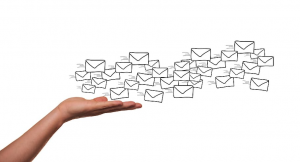Jun 16, 2020

We need to be highly efficient in these COVID times, and a clear Subject line is the first step to getting the responses you need to move important work ahead. Here are some helpful tips to keep in mind.
1. Use a Subject line that communicates the focus of the email. You may have multiple items about a single subject or topic, so ask yourself what is the one thing that you want the receiver to see or do first? Keep each email about one topic and start a new email if you can with a different topic.
“HR concern – need 30 minutes of your time today”
Instead of “Reaching out for a favor” try “Need your help writing proposal”
Instead of “Call me” try “ABC Client – emergency situation – call me asap”
2. Keep the same Subject line when in dialogue about one thing. It may be tempting to change the Subject line to match your reply, but it makes it harder to find emails again when searching on a later date. Don’t touch the Subject line in a communication thread. Create a new Subject line when you start a conversation about a new topic.
3. Divide your Subject line into sections. It is helpful to start with the large topic/project/client, add the focus for this particular email, and then add time sensitivity of the request. By starting with client name, it is easier to capture all emails about that focus when search for project/client work.
“Email communications – tip sheet needed – by June 11”
“ABC Client – proposal review – need asap”
4. End with the type of request you have or a deadline. A reader needs to see at a glance and without opening the email, how time sensitive your email is. At the end of your Subject line add: “FYI only”, “response needed”, “deadline June 10”, or other specific instructions.
“Program M – template finalized – FYI only”
“ABC Client – sign off needed – Urgent“
5. Keep it brief. The purpose of the Subject line is only to clearly state the focus and how much to prioritize it. You will be describing your concerns, ideas, questions and work in the body of the email.
“RDC work – facilitator needed – please reply”
6. Use limited punctuation. Normal punctuation rules don’t apply in Subject Lines, but you may want to use a dash to separate out the sections. See the example in #3 above. Use All Caps function sparingly.
What do you need to pay special attention to?
***********
Jeanette Romkema (jeanette@globallearningpartners.com) is GLP Senior Partner and Vision & Strategy Leader. Rachel Nicolosi (rachel@globallearningpartners.com) is a GLP Partner and Communications Leader.
Here are other blog posts written by Jeanette.
Here are other blog posts written by Rachel.
You may also be interested in 10 Tips for Effective E-mail Communication



